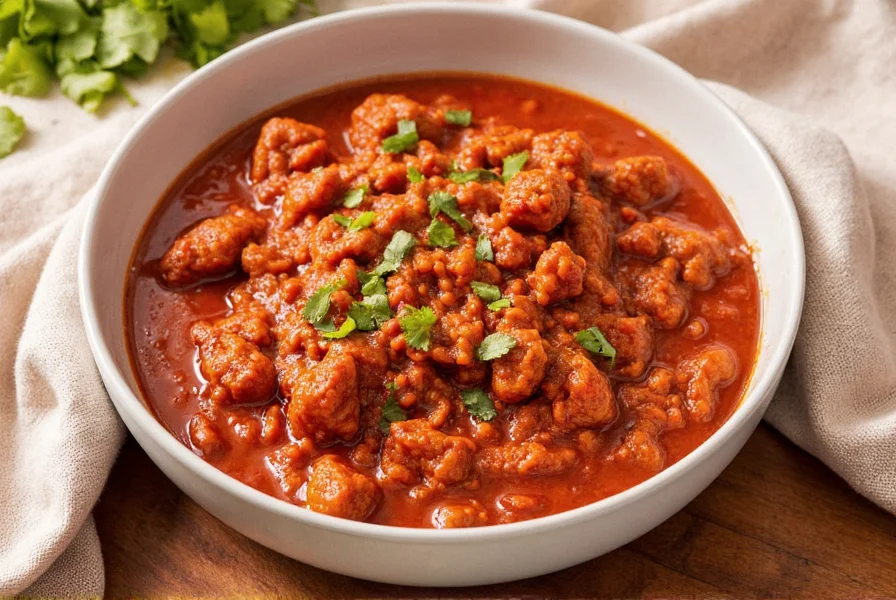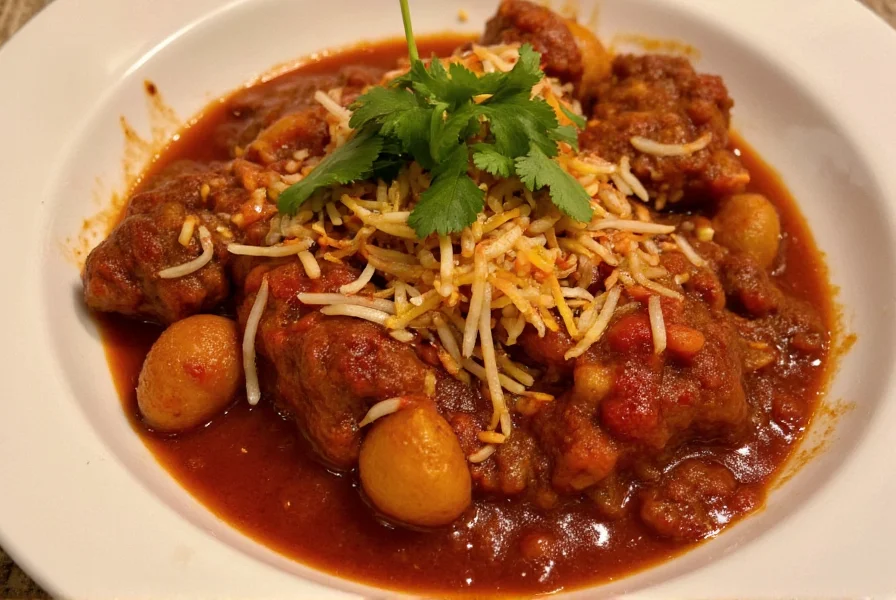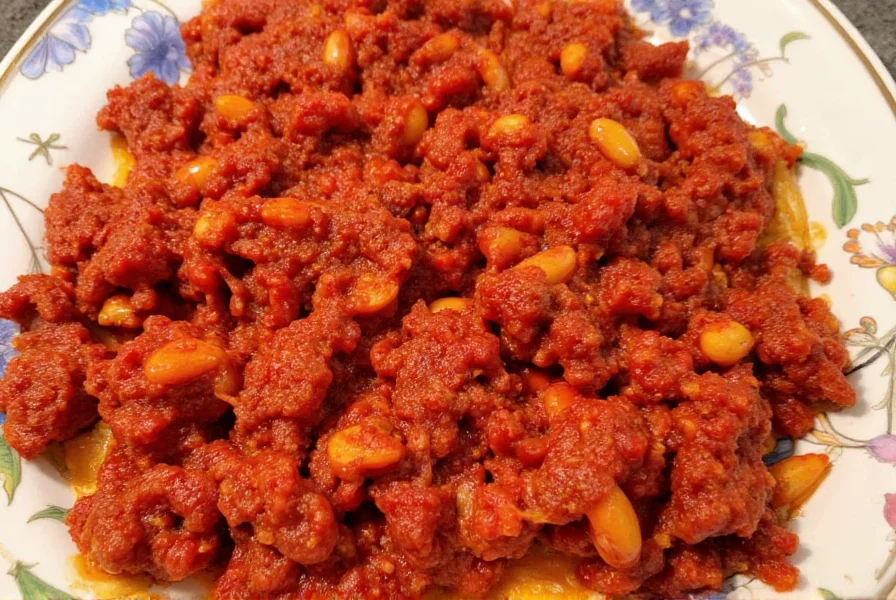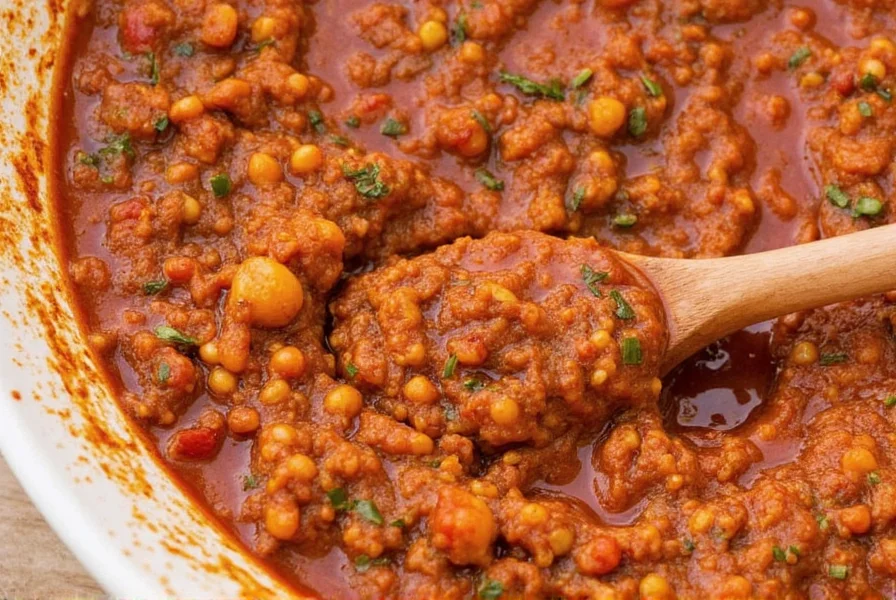Table of Contents
- Introduction to Chilli Colorado
- A Taste of History
- Step-by-Step Chilli Colorado Recipe
- Spice Level & Customization Tips
- Buying Guide for Ingredients
- Serving Suggestions & Pairings
- Frequently Asked Questions
- Conclusion
What Exactly Is Chilli Colorado?
If you're a spice enthusiast or a lover of Southwestern cuisine, then Chilli Colorado needs no introduction. Known for its rich, deep red hue and smoky heat, this dish is a staple in many Southwestern kitchens. But what exactly sets it apart from your average chili? Let's break it down.

Unlike the Tex-Mex ground beef version we often see in the U.S., Chilli Colorado (which translates to "red chili") hails from New Mexico and Colorado traditions. It features tender chunks of pork or beef bathed in a sauce made from dried red chilies — usually a mix of New Mexico, ancho, and sometimes pasilla — that are roasted, soaked, and blended into a thick, flavorful paste.
A Taste of History
Chilli Colorado isn't just a meal; it's a cultural treasure. Rooted in the traditions of Hispanic settlers in the American Southwest, especially in northern New Mexico and southern Colorado, this dish was historically cooked slowly over open flames, allowing the flavors to meld and intensify.

Traditionally, families would prepare large batches for gatherings, festivals, or cold winter nights. Today, Chilli Colorado has evolved but still holds strong to its roots. Whether used as a burrito filling, enchilada topping, or simply eaten on its own with tortillas, this chili continues to bring people together through shared meals and stories.
Chilli Colorado Recipe: Spicy, Smoky, and Satisfying
Ready to make your own Chilli Colorado at home? Here's a classic recipe that serves 4–6 and brings out all the complex flavors without overwhelming your taste buds.
Ingredients:
- 2 lbs pork shoulder or beef chuck, cut into cubes
- 4 dried New Mexico chilies
- 2 dried ancho chilies
- 2 tablespoons vegetable oil
- 1 large onion, chopped
- 4 garlic cloves, minced
- 2 cups chicken or beef broth
- 1 teaspoon cumin
- 1/2 teaspoon oregano (preferably Mexican)
- Salt to taste
Instructions:
- Heat a skillet and toast the dried chilies until fragrant (about 1–2 minutes per side). Remove and soak in hot water for 20–30 minutes.
- In a pot, brown the meat with oil. Set aside.
- Blend the soaked chilies with some soaking liquid, onion, garlic, and spices into a smooth sauce.
- Return the meat to the pot and add the sauce. Stir well, cover, and simmer for 1.5–2 hours or until meat is tender.
- Add broth as needed to adjust consistency.
- Taste and adjust seasoning before serving.
Spice Level & Customization Tips
One of the best things about Chilli Colorado is how customizable it is when it comes to heat and flavor. Here's a quick guide to help you tweak the spice level to suit your preferences:
| Chili Type | Scoville Units | Flavor Profile |
|---|---|---|
| New Mexico Chili | 1,000–1,500 | Fruity, earthy, slightly smoky |
| Ancho Chili | 1,000–2,000 | Sweet, raisin-like, mild to moderate |
| Pasilla Chili | 1,000–2,500 | Berry-like, dark fruit tones |
| Guajillo Chili | 2,500–5,000 | Tangy, spicy, bright flavor |

To increase the heat, consider adding a pinch of cayenne pepper or a fresh jalapeño while blending the sauce. For a milder version, remove the seeds from the dried chilies before soaking them.
Buying Guide for Chilli Colorado Ingredients
Knowing where to source quality ingredients is key to making a stellar batch of Chilli Colorado. Here's a guide to help you choose wisely:
Meat Selection
- Pork Shoulder: Great marbling ensures moist, tender meat after slow cooking.
- Beef Chuck: Ideal for richness and depth; great for those who prefer a heartier texture.
Dried Chilies
- Look for firm, unbroken skins with vibrant colors.
- Avoid overly brittle or discolored chilies.
- Purchase from reputable stores or Latin markets for authenticity.
Spices & Broths
- Mexican oregano offers more robust flavor than Mediterranean oregano.
- Use low-sodium broth if you want full control over salt levels.
Serving Suggestions & Pairings
Once your Chilli Colorado is ready, the fun begins! Here are some top ways to enjoy this bold, flavorful dish:

Top 5 Serving Ideas:
- With Warm Tortillas: The traditional way — spoon some chili onto a flour tortilla and roll it up.
- Over Rice: Make a hearty plate by ladling it over white or cilantro-lime rice.
- As Enchilada Filling: Use it as a base for red enchiladas — layer it between corn tortillas and cheese.
- With Eggs: Spoon over scrambled eggs or breakfast tacos for a spicy kick.
- Cheesy Dip: Add a splash of cream cheese or sour cream and serve with tortilla chips.
Frequently Asked Questions
What's the difference between Chilli Colorado and regular chili?
Chilli Colorado specifically uses dried red chilies as the main flavor component, creating a deep red sauce with smoky, complex notes. Traditional chili (like chili con carne) typically uses ground meat and fresh tomatoes or tomato paste, often with kidney beans. Chilli Colorado has a smoother, richer sauce without the chunky texture of bean-based chili.
What's the best cut of meat for Chilli Colorado?
Pork shoulder (also called pork butt) is ideal because its high fat content keeps the meat tender during the long cooking process. Beef chuck is the second-best option for those who prefer beef. Avoid lean cuts like sirloin, which will become tough during the slow cooking required for this dish.
Can I make Chilli Colorado in a slow cooker or Instant Pot?
Yes! For a slow cooker: After browning the meat and preparing the chili sauce, transfer everything to your slow cooker and cook on low for 6-8 hours. For an Instant Pot: Use the sauté function to brown the meat, then add everything and pressure cook for 35 minutes followed by a natural pressure release for 15 minutes.
Why do you toast the dried chilies before using them?
Toast the chilies to enhance their natural flavors and remove any musty odors. The dry heat unlocks complex flavors and aromas that would otherwise remain dormant. Be careful not to burn them - they should just become fragrant and slightly darker in color.
What should I do if my Chilli Colorado is too spicy?
If your chili is too hot, add more broth to dilute the heat. You can also stir in a tablespoon of sugar or honey to balance the spiciness, or add dairy like sour cream or cheese when serving. For future batches, remove all seeds and membranes from the dried chilies, as these contain most of the capsaicin (the compound that creates heat).
Can I make Chilli Colorado vegetarian?
Absolutely! Simply omit the meat and use jackfruit, mushrooms, or tofu instead. Adjust the cooking time accordingly - vegetarian versions typically need less cooking time than meat versions. For best results, add 1 cup of cooked black beans for extra protein and texture.
How long does Chilli Colorado last in the fridge?
Properly stored in an airtight container, it can last up to 5 days. Reheat gently on the stovetop for best results. The flavors often improve after 24 hours as the ingredients continue to meld together.
Can I freeze it?
Yes, this chili freezes beautifully. Portion it into containers or bags and freeze for up to 3 months. For best results, leave some space at the top of containers as the liquid will expand when frozen. Thaw overnight in the refrigerator before reheating.
Why is my Chilli Colorado bitter?
Bitterness usually comes from over-toasting the dried chilies or using old, stale chilies. To fix bitter chili, add a small amount of sugar (1 teaspoon at a time) or a splash of apple cider vinegar to balance the flavors. For future batches, be careful not to burn the chilies during toasting - they should just become fragrant, not blackened.
Final Thoughts
Whether you're new to the world of spices or a seasoned chili connoisseur, Chilli Colorado offers a delicious gateway into authentic Southwestern flavors. Its balance of smoky warmth, rich texture, and adaptable spice level makes it a versatile dish for any occasion.
So grab your apron, round up your ingredients, and give this iconic chili a try. Your taste buds will thank you!











 浙公网安备
33010002000092号
浙公网安备
33010002000092号 浙B2-20120091-4
浙B2-20120091-4